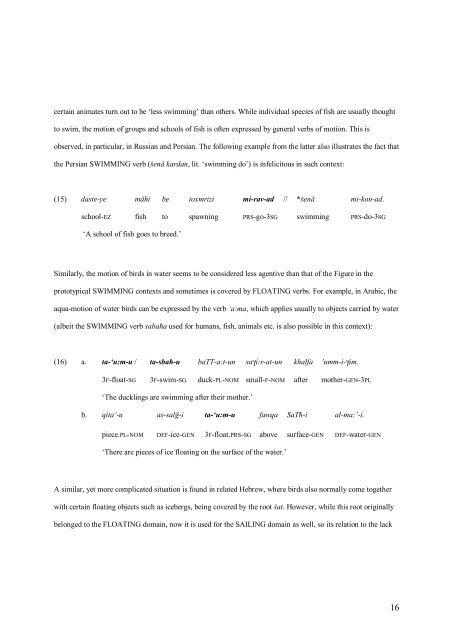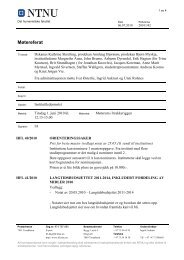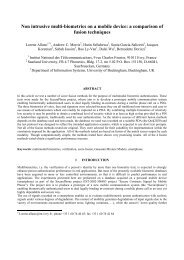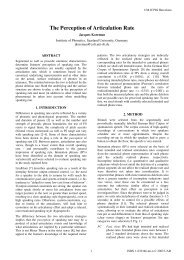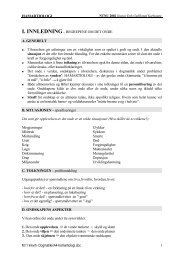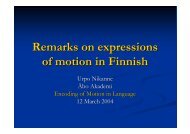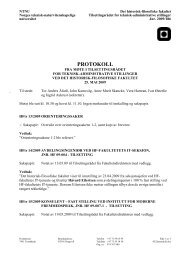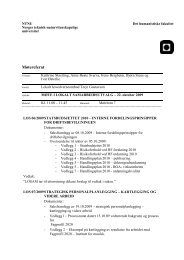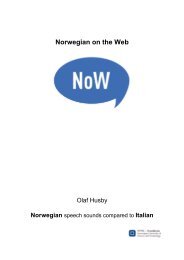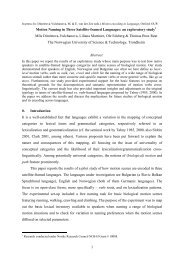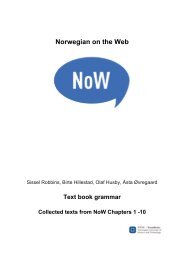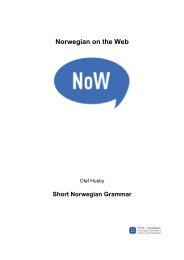Domains of aqua-motion: a case study in lexical typology Yury A ...
Domains of aqua-motion: a case study in lexical typology Yury A ...
Domains of aqua-motion: a case study in lexical typology Yury A ...
You also want an ePaper? Increase the reach of your titles
YUMPU automatically turns print PDFs into web optimized ePapers that Google loves.
certa<strong>in</strong> animates turn out to be ‘less swimm<strong>in</strong>g’ than others. While <strong>in</strong>dividual species <strong>of</strong> fish are usually thought<br />
to swim, the <strong>motion</strong> <strong>of</strong> groups and schools <strong>of</strong> fish is <strong>of</strong>ten expressed by general verbs <strong>of</strong> <strong>motion</strong>. This is<br />
observed, <strong>in</strong> particular, <strong>in</strong> Russian and Persian. The follow<strong>in</strong>g example from the latter also illustrates the fact that<br />
the Persian SWIMMING verb (šenā kardan, lit. ‘swimm<strong>in</strong>g do’) is <strong>in</strong>felicitous <strong>in</strong> such context:<br />
(15) daste-ye māhi be toxmrizi mi-rav-ad // *šenā mi-kon-ad.<br />
school-EZ fish to spawn<strong>in</strong>g PRS-go-3SG swimm<strong>in</strong>g PRS-do-3SG<br />
‘A school <strong>of</strong> fish goes to breed.’<br />
Similarly, the <strong>motion</strong> <strong>of</strong> birds <strong>in</strong> water seems to be considered less agentive than that <strong>of</strong> the Figure <strong>in</strong> the<br />
prototypical SWIMMING contexts and sometimes is covered by FLOATING verbs. For example, <strong>in</strong> Arabic, the<br />
<strong>aqua</strong>-<strong>motion</strong> <strong>of</strong> water birds can be expressed by the verb ‘a:ma, which applies usually to objects carried by water<br />
(albeit the SWIMMING verb sabaħa used for humans, fish, animals etc. is also possible <strong>in</strong> this context):<br />
(16) a. ta-‘u:m-u / ta-sbaħ-u baTT-a:t-un saγi:r-at-un khalfa ’umm-i-γim.<br />
3F-float-SG 3F-swim-SG duck-PL-NOM small-F-NOM after mother-GEN-3PL<br />
‘The duckl<strong>in</strong>gs are swimm<strong>in</strong>g after their mother.’<br />
b. qita‘-u as-salğ-i ta-‘u:m-u fawqa SaTħ-i al-ma:’-i.<br />
piece.PL-NOM DEF-ice-GEN 3F-float.PRS-SG above surface-GEN DEF-water-GEN<br />
‘There are pieces <strong>of</strong> ice float<strong>in</strong>g on the surface <strong>of</strong> the water.’<br />
A similar, yet more complicated situation is found <strong>in</strong> related Hebrew, where birds also normally come together<br />
with certa<strong>in</strong> float<strong>in</strong>g objects such as icebergs, be<strong>in</strong>g covered by the root šat. However, while this root orig<strong>in</strong>ally<br />
belonged to the FLOATING doma<strong>in</strong>, now it is used for the SAILING doma<strong>in</strong> as well, so its relation to the lack<br />
16


